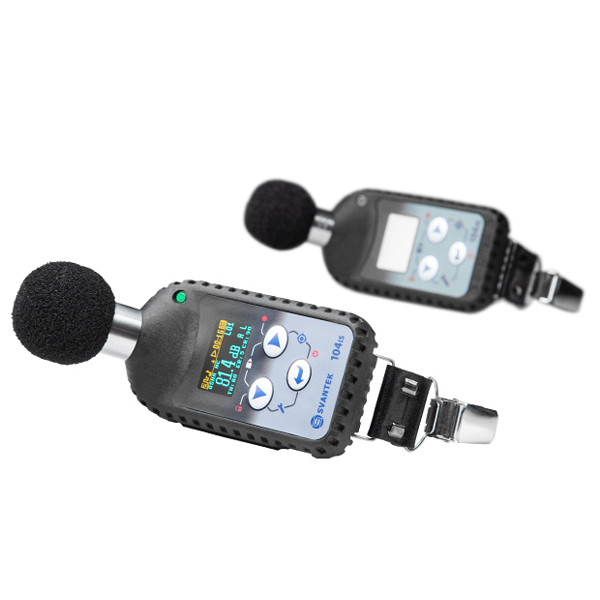The new SV 104BIS is a personal noise dosimeter equipped with the new MEMS microphone, which offers a measuring range from 53 dB Leq to 143 dB Peak. The list of addons includes new large 8 GB memory and fast data transmission with new completely docking stations. The device features a robust 1/2″ MEMS microphone with an autocalibration function and TEDS memory, a high contrast OLED screen, and a built-in tri-axial accelerometer for vibration shock detection
Among the unique features of the new model, the software is automatic noise dose calculation, sound pressure level logging, audio recording, octave band frequency analysis, and auto-calibration. The new ATEX dosimeter has an 8GB memory and fast data transfer via new docking stations. The new Bluetooth® interface enables previewing current results on a mobile app.
How to use a noise dosimeter?
Using a noise dosimeter typically involves the following steps:
- Preparation: Before using the noise dosimeter, make sure to read the manual, the standard followed in your region or country and familiarize yourself with the device’s features and controls. Charge the battery and insert the memory card if your model has one.
- Calibration: Most noise dosimeters require regular calibration to ensure accurate readings. This can be done using a sound level calibrator or by performing an on-site calibration procedure.
- Mounting: Attach the noise dosimeter to your body using the provided clip or another mounting device. Make sure the microphone is positioned close to your ear to accurately measure the sound levels you are exposed to.
- Start measurement: Turn on the noise dosimeter and select the desired measurement profile. The device will start recording and integrating sound levels over time.
- Real-time monitoring: Some noise dosimeters have real-time monitoring features that allow you to see the current sound levels and the accumulated dose in real time. This can be useful to determine when to use hearing protection.
- Stop measurement: When you are finished with the measurement, turn off the device and remove it from your body.
- Data analysis: Transfer the measurement data to your computer for analysis using the provided software or data transfer cable. The software will display the sound levels over time and the accumulated dose, which can be used to assess the risk of hearing damage.
It is important to follow the manufacturer’s instructions and guidelines when using a noise dosimeter to ensure accurate and reliable readings.
www.svantek.com

